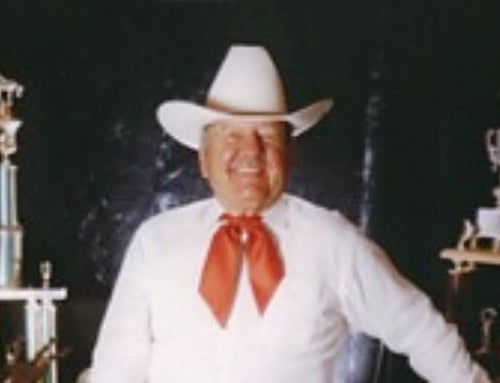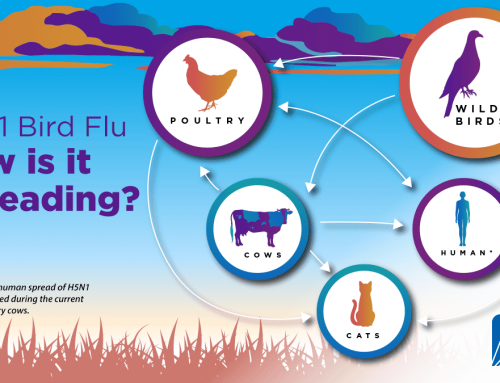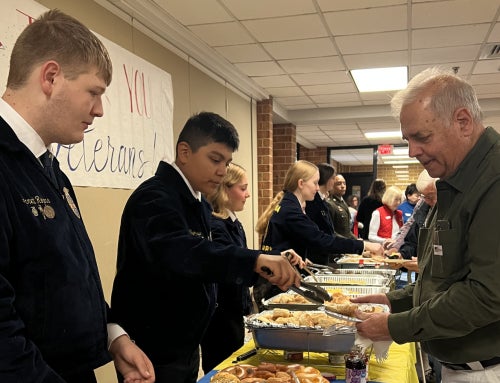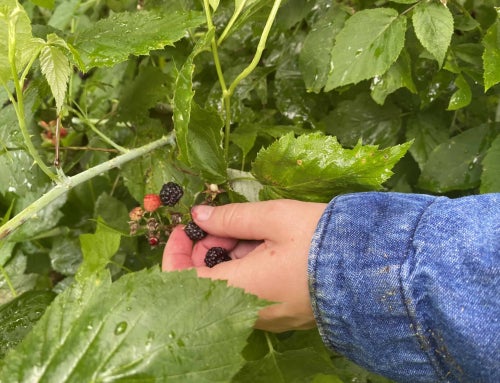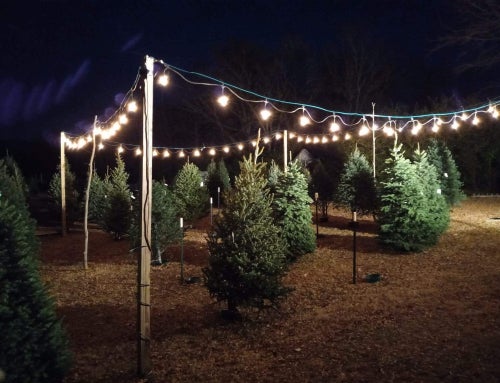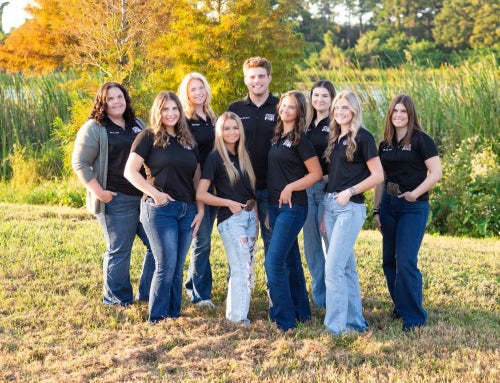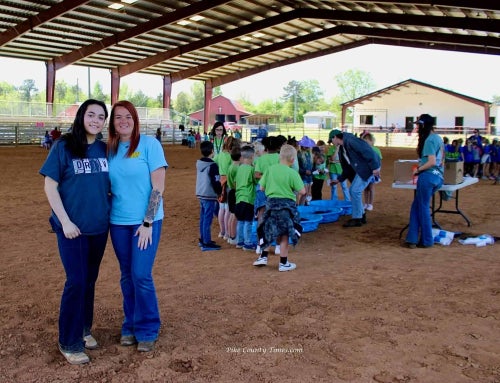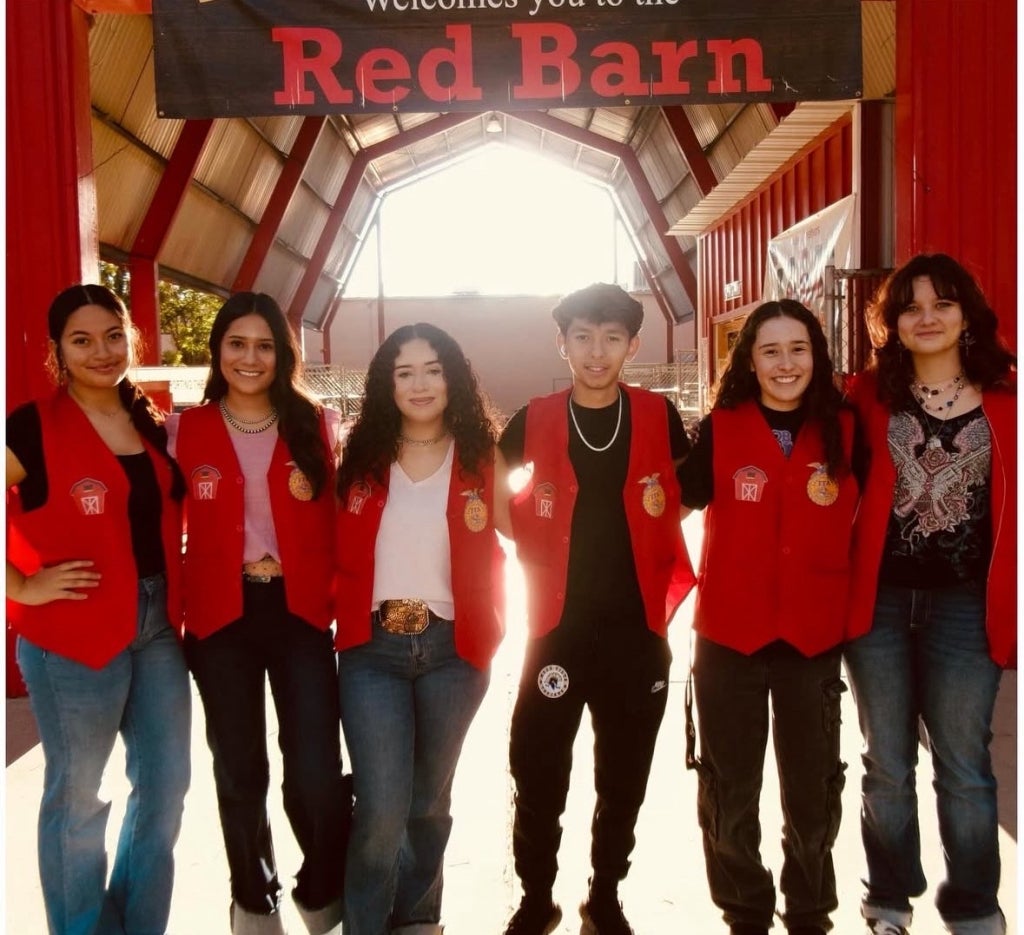
Destiny Jaramillo (third from left) stands with her FFA chapter in front of the Red Barn.
What’s a big, red barn doing smack dab in the middle of Albuquerque, N.M.? It’s not for housing hay, nor is it for storing stables. Instead, the Red Barn serves as a cornerstone of agriculture exposure for New Mexican citizens. Every day, for the two weeks that comprise the New Mexico State Fair, FFA chapters from across the state take to the Red Barn to create an insightful experience in the world of agriculture and FFA.
Destiny Jaramillo, Mesa Vista native and proud FFA member, helped run the Red Barn for her first time this year, alongside some fellow chapter members. “I think the purpose of Red Barn is to ag-vocate and teach the younger (and even the older) generation how animals work,” Jaramillo says.
The barn served as a temporary home for a wide spread of animals this year, including baby chicks, ducks, rabbits, pigs, donkeys, miniature goats and a Highland cow. Those who walked the barn had the opportunity to visit each animal and learn about its role in the agriculture industry.

The Mesa Vista FFA Chapter stands inside the miniature goats’ pen at the Red Barn.
Throughout the decades, the Red Barn has become a staple attraction for the state fair. “I think Red Barn has grown so popular because it is free,” Jaramillo says. “And as FFA members, we are always welcoming!”
The Red Barn isn’t just a positive experience for those that walk its floor; the members in the pens doing the work benefit from extraordinary leadership skills. This experience helped Jaramillo grow as a leader and “gain patience and understanding,” she says.
Days may have been long (and often dirty), but for Jaramillo, the people made it worth all the while. “To be honest, just seeing how happy the little kids get with all of the animals impacted me in a positive way,” she says. Red Barn volunteers see thousands of faces a day, so ensuring each person has the same chance for a positive experience is incredibly important for Jaramillo.
When asked what she would tell an urban community member who wants to know what FFA or agriculture is, Jaramillo says, “it is one of the best programs I have ever been in. It has taught me life skills, made me lifelong friends and made me a better person. The most important thing is that you don’t have to be a farmer or a rancher. Everyone has a place in FFA!”
It’s clear that this widely anticipated tradition is much more than a big, red barn. It’s a community of people from all walks of life who are united under one common thread: agriculture.


